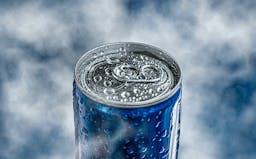Planning Vegan Meals for Kids - What Parents Need to Know
Article by:
Professor Walter Veith, PhD |
10 min read
Children have smaller stomachs than adults, but their nutrient needs in proportion to their size and weight is much higher than it is for adults. Therefore, diets that are appropriate for adults can be deficient for young children.
Children under the age of three can accommodate only 200-300ml (about a cup) of food at each meal. Plant-based diets, which are naturally higher in fiber and lower in calories are fine for adults, but won’t meet the nutrition needs of growing children without some careful planning. Parents should avoid making plant-based eating based on adult meal requirements, and instead make a shift to more high-energy foods, in order to sustain normal development in their children. Variety is the watchword because single-plant food diets, such as an exclusively fruit-based diet, will not supply children with the sufficient nutrients they need for normal development.
Infants and Milk
The best food for infants is their mother's milk. If it can be helped, avoid substituting the milk of other animals for mother's milk, as the composition of milk varies from species to species. Human infants are designed to drink human milk, and a demand-type breast-feeding schedule would go a long way in meeting the infant’s needs. Failing this, ensure that infants consume adequate quantities per meal as dictated by their age. The composition of mother's milk will also vary with the mother's diet, but it can be said that good wholesome food will make good wholesome milk. On the whole, the breast milk of vegetarians contains fewer environmental contaminants and additives than the milk of omnivores does,1 and it has been found that the vegetarian infant can thrive if care is taken to supplement their iron, B12, and vitamin D intake.

When transitioning from breast-feeding to table foods, avoid restrictive diets such as those followed by some groups such as Zen macrobiotics, Black Hebrews, and Rastafarians. These diets are normally structured around a few grains, vegetables, and fruits in addition to milk made from grains. They are often deficient in calories, proteins, and numerous minerals and vitamins, particularly vitamins D and B12. Such diets have led to numerous hospitalizations for malnutrition, and have been responsible for the deaths of a number of children.2
Choosing Food for Your Children
Some grains, such as maize, increase up to six times in volume when cooked as a porridge, that is, when it’s cooked in water until it has a creamy texture. Any grain can be cooked as a porridge, but this drastically reduces the energy content per unit volume because grains cooked this way hold a lot of water. Porridges, therefore will not supply sufficient energy for small children because porridge is filling, but the volume comes mostly from water. Instead, increase their intake of cereals cooked in other ways, nut butters, avocados, dried fruit spreads, and legumes. To ensure your child is getting enough nutrients like fats and protein, don’t allow your child to fill up just on fruits, vegetables, and porridges (gruels).3

Nut butters such as almond, brazil, cashew, peanut, pecan, and walnut butters or sesame-chickpea butter, can be given to toddlers while avocado can also be served even to infants.4 Avocados are a rich source of numerous nutrients including copper, potassium, and riboflavin. In terms of their fat content, they also supply more energy per unit mass than other fruits.
Choose combinations of grains and legumes or nuts and seeds to satisfy the amino acid requirements of vegan children. Furthermore, weaned children should receive vitamin D and B12 fortified soy milk or nut milk, particularly when their exposure to the sun is limited. It has been shown that vegan diets can support normal growth and development.5 In the table below, a diet plan for young vegan children is presented.
Planning Vegan Meals for Kids
| Food group | Approximate serving size | Daily servings per age |
| Carbohydrates | ||
| Bread | 1 slice |
6m-1yr: 1 1-4yr: 3 4-6yr: 4 |
| Cereals (enriched) | 1-5 tbsp |
6m-1yr: 1/2 1-4yr: 1 4-6yr: 2 |
| Fats | ||
| All | 1 tsp |
6m-1yr: 0 1-4yr: 3 4-6yr: 4 |
| Fruits | ||
| Citrus | 1/4 - 1/2 cup |
6m-1yr: 0 1-4yr: 2 (juiced) 4-6yr: 3 |
| Other | 2-6 tbsp |
6m-1yr: 3 (pureed) 1-4yr: 2 (chopped) 4-6yr: 3 |
| Vegetables | ||
| Green leafy or deep yellow | 1/4 - 1/2 cup |
6m-1yr: 1/4 (coopked & pureed) 1-4yr: 1/2 (chopped) 4-6yr: 1 |
| Other | 1/4 - 1/2 cup |
6m-1yr: 1/2 (cooked & pureed) 1-4yr: 1 (chopped) 4-6yr: 1 |
| Protein foods | ||
| Soy milk (fortified) | 1 cup |
6m-1yr: 3 1-4yr: 3 4-6yr: 3 |
| Other | 1-6 tbsp |
6m-1yr: 2 (cooked & sieved) 1-4yr: 3 (chopped) 4-6yr: 3 |
| Miscellaneous | ||
| Brewers yeast | 1 tbsp |
6m-1yr: 0 1-4yr: 1 4-6yr: 1 |
| Molasses | 1 tbsp |
6m-1yr: 0 1-4yr: 1 4-6yr: 1 |
| Wheat germ | 1 tbsp |
6m-1yr: 0 1-4yr: optional 4-6yr: optional |
This diet plan for vegan kids supplies sufficient nutrients to meet the demands of growing children, and can be substantially increased by more liberal servings.
As stomach capacity increases, a gradual shift to adult eating patterns can take place. Preschoolers should still receive greater portions of energy-rich foods and foods high in calcium, zinc, iron, and supplementation of vitamin D and B12.6 Furthermore, it is important to ensure a good mix of plant-protein sources. A whole-food diet, comprising legumes, grains, nuts, seeds, fruits, and vegetables (inclusive of the leafy green varieties), together with fortified soy milk, will have children brimming with health. If wholesome eating practices have been adopted in the family and care is taken to supply the special needs of younger children, then there is no need for concern. Furthermore, it is not necessary to cook separate meals for younger children, but merely to ensure that the relative portions that children obtain are geared to their needs.
|
Cereals |
Include commercial varieties of breakfast cereals and enriched rice, millet, macaroni, brown rice, wheat berries, dry oats, and granola.
|
|
Fruits |
Include avocado, apple, peach, banana, pear, berries, grapes, as well as dried fruit spreads made with dried peaches, apricots, raisins, and figs.
|
|
Protein foods |
Include nuts, nut butters, peanut butter, legumes, miso, seed butters, and tofu. Nuts and seeds should be ground for toddlers.
|
|
Green leafy or deep yellow vegetables |
Include carrots, green peppers, broccoli, spinach, endive, escarole, and kale.
|
Table 5.2 Diet plan for young vegan children.7
In many homes, kids frequently hear, “Eat your vegetables!” And that’s good advice. But plant-based meals for kids must include sufficient nut-grain-legume dishes that the child needs for growth. It’s important you don’t encourage growing children to fill up on vegetables and fruits, not leaving enough room for the fat-and-protein-rich foods needed for their development. Also, children have a natural tendency to consume more of the energy-rich foods, and this should not be discouraged as long as it does not lead to the exclusion of other essential foods.
Establish health-promoting eating habits early with well-planned, regularly spaced meals. Avoid allowing children to do as they please when it comes to eating, but avoid rigid, rule-setting also. Remember that eating should be a pleasure, not a burden, and mealtimes should be something to look forward to. A relaxed atmosphere at the table promotes good digestion. Children should not feel pressured because their parents hold rigid or fanatical views on nutrition.

A study of British vegan children showed that their average energy intake was less than the recommended daily allowance (RDA) for British children in general, particularly in the two-to-four year age group. But this is not uncommon, as many non-vegetarian children also fail to meet the RDA. The average nutrient density, however, was higher for vegan diets for most nutrients, with the exception of calcium and fat, when compared to the average UK diet.
Vegan kids tended to be lighter in weight than average, but normal in terms of their blood formation and educational and physical development. Vegan diets have a bad reputation because of a few inappropriate diets, but appropriate vegan diets produce healthy children. Moreover, there is no evidence that either intellectual function or physical stamina are adversely affected by a well-planned vegan diet.8
What about Adolescents and Young Adults?
Adolescents need more energy, protein, calcium, phosphorus, iron, zinc, and vitamin A because of the rapid growth during this stage. Besides catering for the higher protein and energy needs, ensure that the diet includes green leafy vegetables or other foods rich in calcium. Supplementation of B12 and zinc are also recommended for this stage.
This article is adapted from the book Diet and Health by Dr. Walter Veith. Updated April 2022
These statements have not been evaluated by the Food and Drug Administration or Health Canada. Our articles, videos and products are not intended to diagnose, treat, cure, or prevent any disease. If you are pregnant, nursing, taking medication, or have a medical condition, consult your physician before following any recommendations or using any product on our site. You assume sole responsibility for your personal health, and you must use your own discretion under doctor consultation to determine whether any product or recommendation on this site is suitable for your personal situation.








